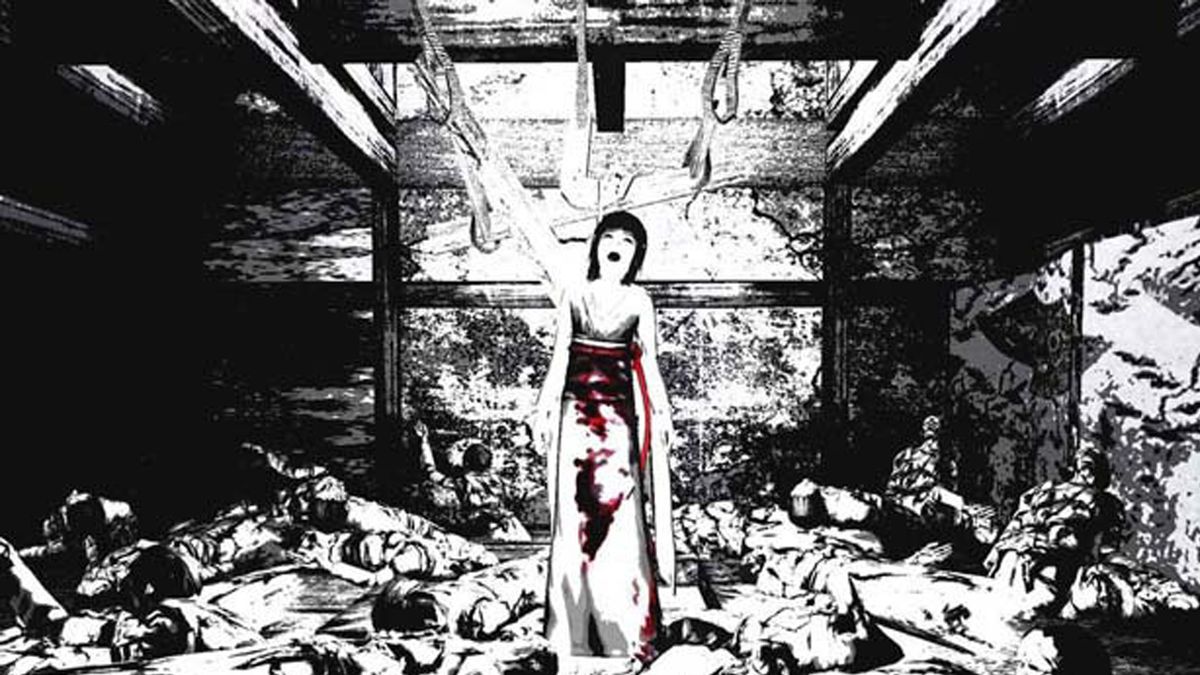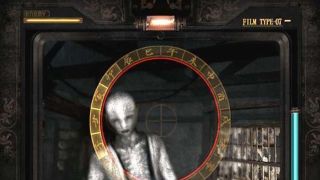Fatal Frame 2: Crimson Butterfly took the central tenet of survival horror to its unnatural extreme
Resident Evil gives you limited ammo, Fatal Frame 2: Crimson Butterfly gives you nothing but nightmares

The PS2 was, for most of its lifespan, the home of survival horror. The genre's big hitters, Resident Evil and Silent Hill, might have made their debut on Sony's previous console, but their best outings appeared on the subsequent machine. Before 2005's Resident Evil 4 shredded the rule book, the scares came silently and sinisterly, the result being a golden age for the genre.
2001's Silent Hill 2 deserves it's universal and enduring acclaim, but 2002's Clock Tower 3, 2003's Forbidden Siren, and 2004's Echo Night: Beyond all delivered their frights in idiosyncratically fiendish and innovative ways. The latter is a game set onboard a spaceship, and which rewards the player with neither weaponry nor a defensive mechanism. And yet compared to Tecmo's Fatal Frame 2: Crimson Butterfly – known within its native Japan as Project Zero 2 – it still feels like the player is overloaded with resources in which to travail all the nightmares put before them.
I came to Fatal Frame 2: Crimson Butterfly unaware of the 2001 game that preceded it, but certainly enchanted by dark east Asian folklore. This was an era whereupon Japanese – and to a lesser extent Korean – horror movies were making waves within western pop culture. Fatal Frame's sequel arrived sandwiched between the excellent American remakes of Hideo Nakata's first two Ringu movies, known in the west as The Ring, and in the year between the Japanese and American versions of The Grudge.
Of course, first time players shouldn't be put off if they arrive at Crimson Butterfly without playing the first instalment. The two are only tenuously linked. The game tells the story of twin sisters Mio and Mayu Amakura who, after convening at their favourite childhood spot in which to play, a picturesque woodland area within the fictional Minakamu region, find themselves drawn into a long-abandoned village. I mean, spoiler, it's not totally abandoned – the game would be rubbish if it was – but I'll leave the horror that transpires for readers to witness for themselves. It is, however, a story so worthy of being a great J-horror movie, you wouldn't be surprised if the Tartan Cinema logo was plastered upon the sleeve.
Horror through a different lens

"A story so worthy of being a great J-horror movie, you wouldn't be surprised if the Tartan Cinema logo was plastered upon the sleeve"
It's been said that players found the first Fatal Frame game so scary that director Makoto Shibata put much work into the narrative of the sequel in order to spur on players who abandoned the first game in terror. Make no mistake, Fatal Frame 2: Crimson Butterfly – and in truth all of the games in the Fatal Frame series – is genuinely, nerve-shreddingly terrifying. With a plot that nods to real world Shinto rituals, this is a game that takes the central tenet of survival horror – vulnerability – to its unnatural extreme.
Not only do you play as a child, Mio, but you're charged with protecting your twin sister, Mayu, who, it should be said, limps through the game with a damaged leg. The game gives you no weapon in which to defend yourself, other than an enchanted camera – the Camera Obscura – which has the power to exorcise ghosts. Did I mention that you can only see the ghosts when you raise the camera and the game flips into first-person? I didn't? Ah, sorry about that. Did that mechanic make me scream? It almost killed me dead. Crimson Butterfly made me scream, over and over and over again.
Naughty Dog's Neil Druckmann concurs, telling MCV in 2015 that Crimson Butterfly is "the scariest kind of experience in any medium. I haven't seen a movie that comes close…" You might attribute this to the game's severe absence of ammo – or as Crimson Butterfly presents it, a dwindling supply of camera film. Or composer Ayako Toyada's skeletal but haunting score. Or the relentlessly dank sadness that permeates the game. Or its rich, brilliantly written lore. Crimson Butterfly's unparalleled brilliance contains many ingredients, all of them distasteful, of course. All of them worthy of putting together once more to craft a modern-day remaster, despite the game's visuals holding up gallantly today.
Sign up to the 12DOVE Newsletter
Weekly digests, tales from the communities you love, and more
Fans of Fatal Frame 2: Crimson Butterfly have hoped for this for years, with increasing desperation. Still we wait, teased with mere breadcrumbs. A tooled-up port arrived on the Xbox in 2004 and for PS3 on the PSN in 2013. And, if you have a Wii gathering dust in the cupboard, it's worth dusting it off for a few playthroughs of 2012's Project Zero 2: Wii Edition, which takes the original's 2D controls and shifts it to the first person. The last instalment in the Fatal Frame franchise came way back in 2014 – the same year a middling live-action movie was released - with Fatal Frame: Maiden Of The Black Water for the Wii U. You sense that somewhere, the Camera Obscura is being dusted off for a return to action. I don't half wish they'd hurry up.
In the run up to October 31, 12DOVE is exploring some of the most effective scares that video games have been able to deliver. Click through to GamesRadar's Halloween 2020 guide for more.

27 years later, Resident Evil 2 speedrunners get the "single most needed" quality of life mod, and the fastest world records are already being cut in half

A new Resident Evil reboot movie is in the works with Barbarian's director at the helm, and it sounds like it'll be the first full-blown horror movie in the series' history
Most Popular


